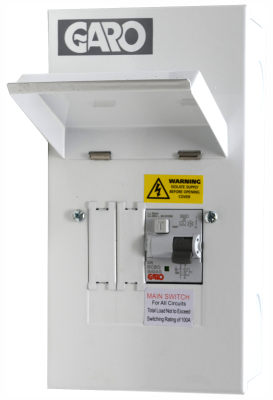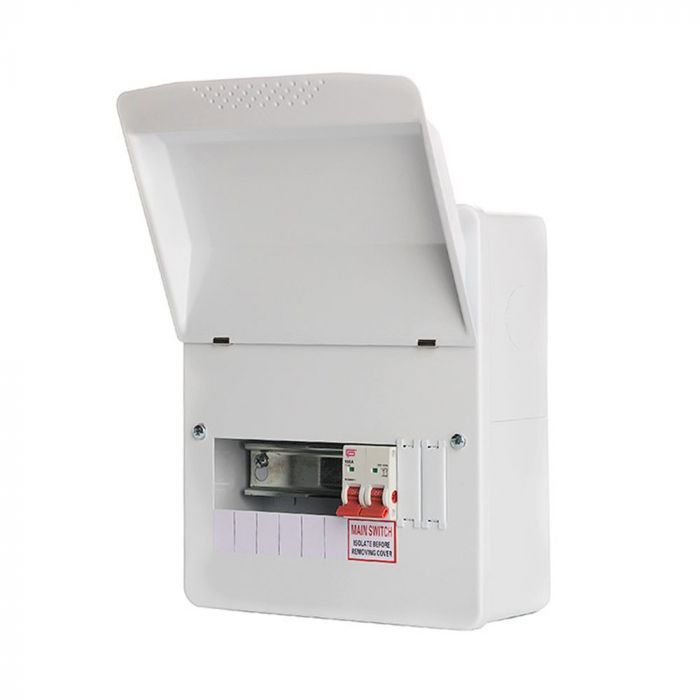The Role of Customer Units in Efficient Energy Management Systems
Customer systems are indispensable to effective energy management systems, serving as the key circulation factors for electrical power within structures. The arrival of clever technologies has actually better enhanced their functionality, allowing for real-time information surveillance and nuanced power consumption evaluation.
Recognizing Consumer Units

Comprehending the function of customer systems begins with recognizing their crucial function in protecting electrical systems. By separating faults within specific circuits, customer devices prevent prevalent failures and potential fire hazards. This seclusion is achieved through using circuit breakers that trip or integrates that impact when a mistake is identified, consequently removing the electric circulation to the influenced circuit.
Additionally, customer devices promote the well organized distribution of power, enhancing the effectiveness of energy usage. They enable the methodical administration of electric lots, which can be especially essential in commercial and commercial settings where demand can vary significantly. Correctly kept customer units add to the long life of electric systems and aid in decreasing downtime caused by electrical failings, eventually supporting the seamless operation of energy-dependent facilities.
Smart Technologies Combination

An essential benefit of wise consumer devices is their capacity to leverage advanced formulas and machine knowing for anticipating analytics. This permits preemptive modifications based on usage patterns, weather report, and various other variables, substantially boosting overall efficiency. Moreover, smart customer systems promote need action programs, where energy usage can be dynamically adjusted during optimal periods to maintain the grid and lower prices.
The combination of renewable resource resources, such as solar and wind, is also streamlined via clever consumer devices. By intelligently managing the intermittency of these sources, these devices guarantee a balanced and trustworthy power supply. Additionally, clever customer units improve customer interaction by offering in-depth insights and remote abilities through mobile applications, fostering a much more proactive approach to power preservation and sustainability.
Tracking Energy Consumption
Building on the abilities of smart technologies combination, keeping track of energy consumption becomes an important emphasis within energy management systems. By leveraging advanced metering infrastructure (AMI), real-time information on energy usage can be accumulated at granular degrees, supplying important understandings right into usage patterns and peak demand periods.
Smart meters and Net of Points (IoT) check my source gadgets play a pivotal duty in this tracking process. These gadgets can track power use in real-time, transmitting information to central systems for analysis.
The integration of these innovations not just empowers consumers with in-depth info concerning their power usage but likewise supports utility companies in managing tons circulation better. Inevitably, specific and continuous tracking is essential for achieving energy effectiveness, price financial savings, and sustainability goals within power monitoring systems.
Optimizing Home Appliance Use

One reliable technique involves recognizing height and off-peak hours to change energy-intensive activities, such as washing or dishwashing, to times when energy demand is reduced. This not just lessens stress on the grid however likewise takes advantage of reduced power tariffs. Additionally, incorporating device learning formulas enables anticipating maintenance, guaranteeing appliances operate at ideal efficiency and lengthening their lifespan.
Energy administration systems can also include user-specific choices and actions to tailor home appliance use routines. Wise lighting systems can change brightness based on occupancy and all-natural light accessibility, while Heating and cooling systems can maintain convenience degrees without excessive power usage.
Supporting Sustainability
Advertising sustainability within power administration systems includes not just improving efficiency yet additionally cultivating ecologically liable techniques. Consumer units are my explanation important to this process, as Click Here they provide real-time information and control devices that enable individuals to keep an eye on and minimize their power usage. By leveraging sophisticated technologies, customer devices can identify energy-saving chances and help with the assimilation of renewable resource sources like solar and wind power.
One critical facet of promoting sustainability is enlightening consumers on the benefits of liable power usage. Via thorough understandings supplied by consumer units, users can make enlightened decisions that decrease their carbon impact. As an example, these units can recommend optimal times for running high-energy devices based on grid need and renewable resource accessibility, thus lowering reliance on fossil fuels.
Moreover, customer devices sustain the fostering of clever grid technologies, which improve the total performance and reliability of power distribution. By enabling two-way communication in between consumers and utility carriers, these systems can dynamically adapt to energy needs, lowering waste and advertising the usage of sustainable power methods.
Final Thought
Consumer devices, as integral parts of energy monitoring systems, significantly boost electric safety and performance within buildings with circuit security and wise technology assimilation. Real-time information monitoring and analysis assisted in by these devices enhance energy usage and appliance use. Furthermore, the incorporation of renewable resource sources advertises lasting practices, contributing to reduced general energy consumption and reduced carbon footprints. Subsequently, consumer systems play an essential duty in progressing both power performance and environmental sustainability.
Advances in wise technologies have actually revolutionized the capacities of power monitoring systems, especially via the assimilation of wise consumer devices.Building on the capabilities of wise technologies combination, keeping track of power usage becomes a crucial focus within energy management systems.Efficient appliance use optimization is a crucial component of power monitoring systems, intending to boost effectiveness and minimize unnecessary energy consumption.Consumer units, as indispensable components of energy administration systems, considerably improve electrical security and performance within buildings via circuit defense and wise modern technology integration. In addition, the consolidation of renewable power resources advertises lasting techniques, contributing to minimized total power intake and lower carbon footprints.